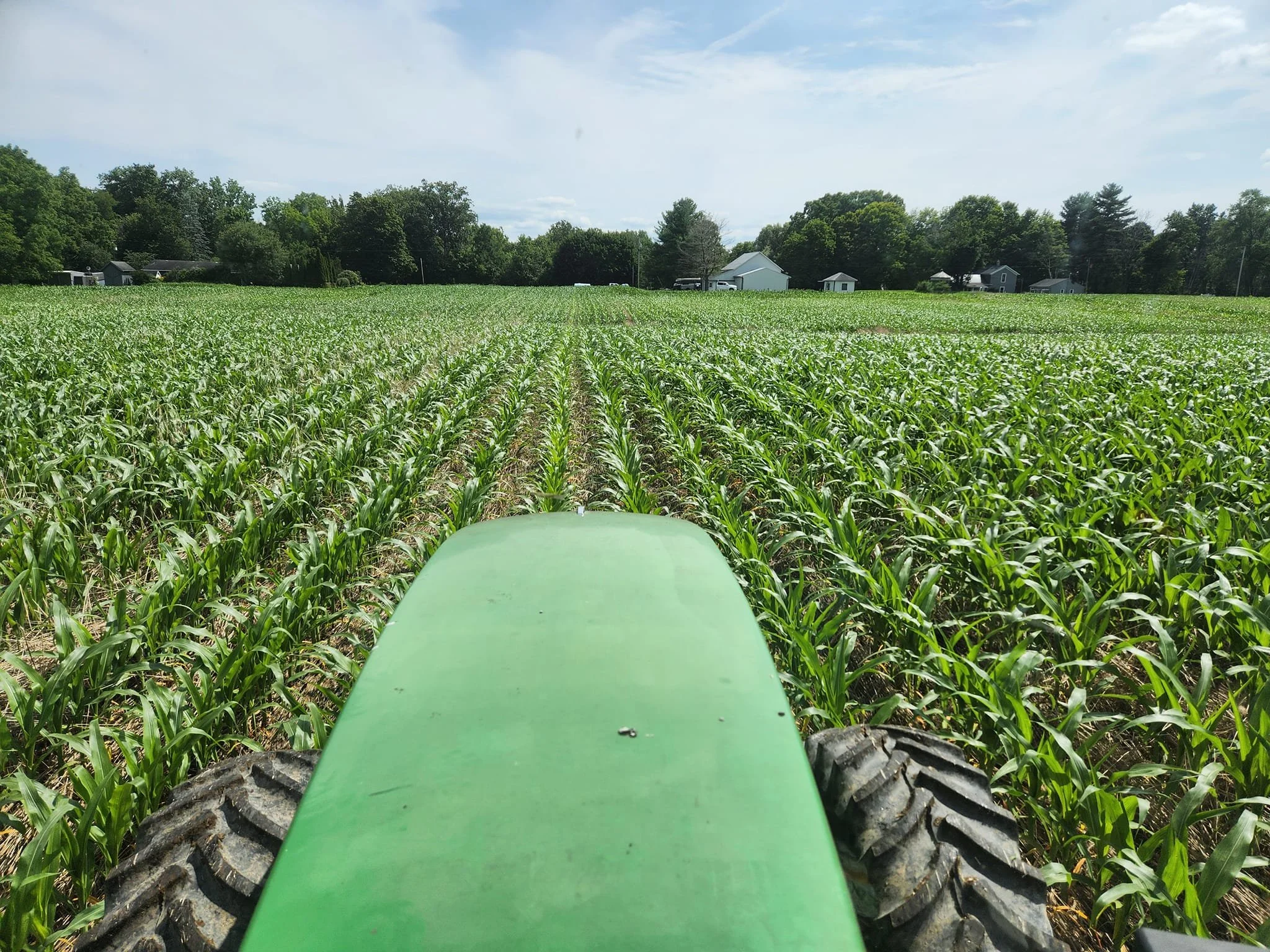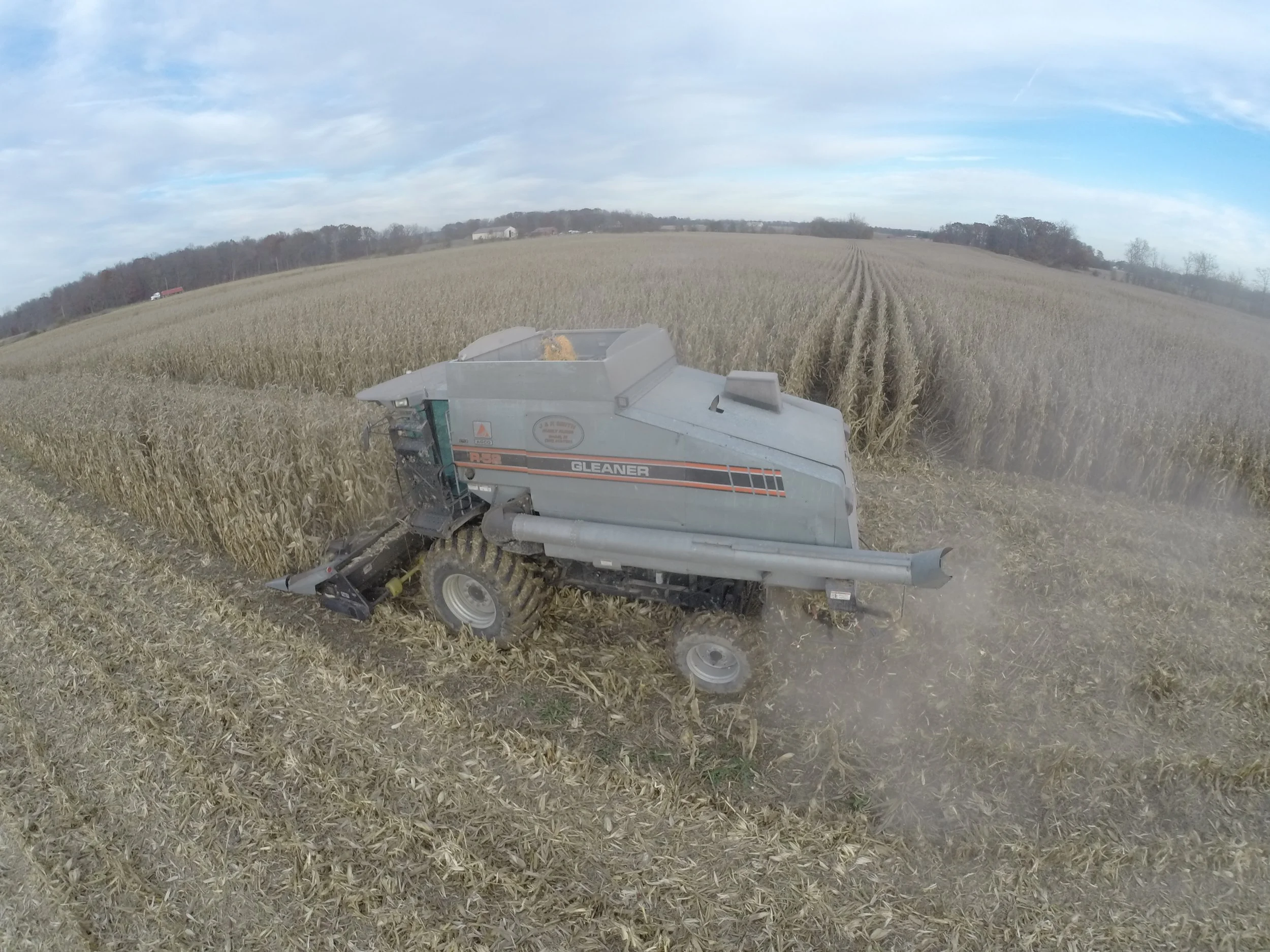Introduction
On our farm, we focus on growing crops that feed people, livestock, and communities — always with care for the land that sustains us. Today, we raise corn, soybeans, wheat, and hay, using conservation practices that protect the soil and ensure productivity for future generations.
Corn
Corn is at the heart of our operation, grown both for livestock feed and for food and energy markets. We use proven conservation practices to keep our soil fertile and productive while producing a reliable crop year after year.
Soybeans
Soybeans provide both protein and oil for countless uses, from livestock rations to food products. Our soybean acres are an important part of our crop rotation, improving soil health and reducing pest and disease pressure.
Wheat
Wheat plays an important role in our crop rotation, providing grain for food markets while also protecting the soil with its dense cover and fibrous root system.
Hay
We also grow hay, which provides feed for livestock and supports soil conservation with perennial cover. It’s a crop that ties directly to our stewardship goals.
How We Grow
No-Till Farming
We reduce soil disturbance through no-till practices, helping conserve soil moisture, protect soil structure, and limit erosion.
Cover Crops
Between harvests, we plant cover crops to build organic matter, improve soil health, and reduce nutrient and soil loss.
Consulting Agronomist
We partner with a consulting agronomist to evaluate fields and guide our decisions with expert, science-based recommendations.
Regular Soil Sampling
Frequent soil sampling allows us to track fertility, monitor soil health, and make data-driven adjustments year after year.
Crop Rotation
By rotating corn, soybeans, wheat, and hay, we naturally reduce pests, break disease cycles, and improve soil fertility.
Nutrient Management
With regular soil tests and precision placement, we apply fertilizer only where it’s needed, reducing runoff and protecting waterways.
Technology in Farming
GPS-guided equipment, yield mapping, and drone imagery allow us to farm more efficiently, reduce waste, and maximize sustainability.
Integrated Pest Management (IPM)
We scout fields, use thresholds, and target only where necessary—prioritizing prevention and minimizing inputs.
Closing Note
Each season brings its own challenges and rewards, but our focus remains the same: producing high-quality crops while protecting the land. By caring for our soil and water today, we ensure that future generations will have the same opportunity to farm and grow.




